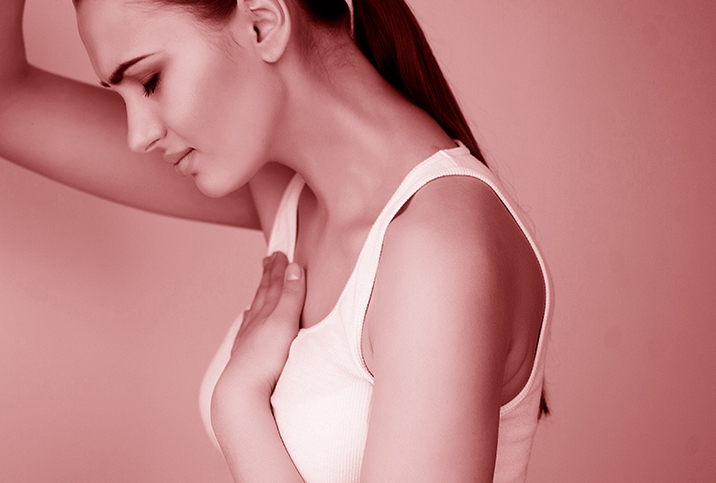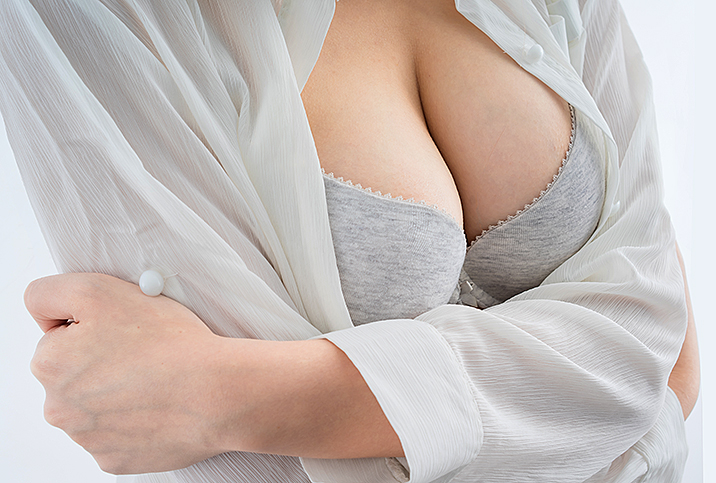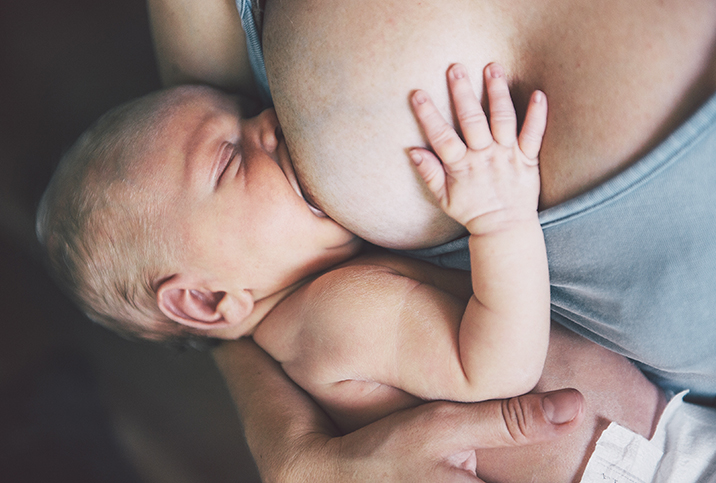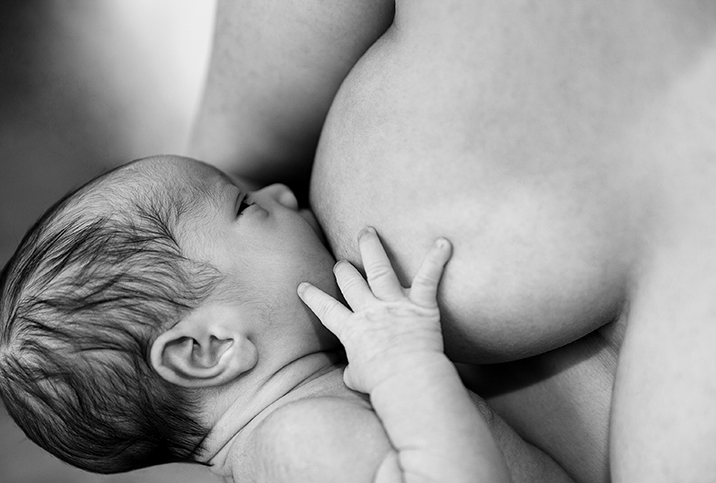When to Be Concerned About Breast Pain

Experiencing breast soreness or pain during your period is very common, but pain unrelated to your cycle can sometimes be a sign you should see a doctor.
Determining the cause can help you better manage the pain and understand your physical health. Identifying whether your breast pain is cyclic or noncyclic can be a good first step in determining the cause.
Breast pain that is cyclic occurs regularly with your changing hormone levels. In young women, cyclic breast pain is the most common type of breast pain. If breast pain is cyclic, it will appear around the same time each month, usually affecting both breasts.
Noncyclic breast pain, on the other hand, is unrelated to the menstrual cycle and isn't associated with a particular recurring pattern. This type of breast pain usually affects only one breast.
The role of hormones in cyclic breast pain
Changing hormone levels throughout the menstrual cycle can cause breast pain and discomfort. Breast pain after menstruation is usually caused by a rise in estrogen levels in the second half of the menstrual cycle, according to Constance M. Chen, M.D., board-certified plastic surgeon and breast reconstruction specialist in New York City.
"The increased estrogen can stimulate breast tissue, which can cause pain and swelling," Chen explained. "Estrogen levels also peak before ovulation, about midway through the first half of the menstrual cycle. This peak in estrogen levels can also cause cyclic breast pain that is worse after menstruation."
"Breast tissue is similar to the uterine lining and is responsive to female hormones. Estrogen, which is produced as the egg grows, causes the lining of the uterus to grow, as well as breast cells," added Tara Scott, M.D., the Akron, Ohio-based medical director of integrative medicine at Summa Health System.
After ovulation, the follicle walls close, and the space previously occupied by the egg fills with new cells known as the corpus luteum, which secretes the hormone progesterone.
"This hormone keeps the lining of the uterus in check and also counteracts the effect of estrogen on breast cells," Scott explained.
Stress can also cause hormone variations which can lead to breast pain.
Pregnancy
Pregnancy can also be a cause of changing hormone levels which can trigger breast pain, making the breasts swollen and tender. Breast pain is especially common for women during the first trimester of pregnancy.
Some women experience breast pain shortly after conception, when estrogen and progesterone production increases, acting on the milk ducts to prepare the body for milk production.
Noncyclic breast pain
Breast pain can also be the result of noncylical reasons, such as medications, mastitis or breast injuries.
Medications
Some medications can cause breast pain, particularly if they have an effect on hormones. Breast pain is cited as a common side effect of hormonal birth control.
Hormone replacement therapy, antibiotics and even some antidepressants can cause breast pain. If breast pain after your period coincides with taking a new drug, be sure to talk to your doctor.
Mastitis
Mastitis is caused by inflammation of breast tissue. Sometimes, an infection can occur, and the condition is often associated with breastfeeding. However, the condition can occur in women who aren't breastfeeding and even sometimes in men.
Symptoms include swelling, redness, hot areas in the breast, burning pain, lumps and nipple discharge. Antibiotics can be used to treat mastitis.
Breast injury
Just like other parts of the body, breasts can be injured from daily activities or sports. Breast injuries can cause bruising, tenderness and discomfort. If you experience pain that doesn't go away accompanied by bruising, swelling or lumps, make sure to speak with your doctor.
Reducing breast pain
Treatment for breast pain depends on the severity, symptoms and age of the patient. In some cases, supplemental hormones and hormone blockers are prescribed. However, other treatment options, such as dietary changes and exercise, can help reduce pain. Eliminating caffeine, lowering sugar intake and eating a low-fat diet can all help with breast pain, according to Johns Hopkins Medicine.
"Breast pain can be exacerbated by caffeine or high sugar intake," Scott said. "Vitamin E 400IU daily could help breast tenderness, as well as a supplement called DIM, which is an extract from cruciferous vegetables like broccoli, kale and cabbage."
When breast pain is a cause for concern
"Breast pain that is not associated with menstruation or that is associated with a lump, redness, swelling or drainage may be a cause for concern," Chen said, noting that nipple discharge after menstruation may also be abnormal.
Breast pain is also a symptom associated with fibrocystic breasts, which are composed of tissue that feels ropelike or lumpy. Most fibrocystic changes are normal and not indicative of anything harmful, but you should see your doctor if you find a new lump or worsening breast pain.
"Fibrocystic breasts cause breast tissue to appear dense on screening mammogram. This has been identified as a risk factor for breast disease/breast cancer," Scott said.
Although women with breast pain might be concerned about breast cancer, breast pain is not a symptom of breast cancer, according to the National Breast Cancer Foundation.
"Breast cancer is usually not associated with breast pain," Chen confirmed.


















